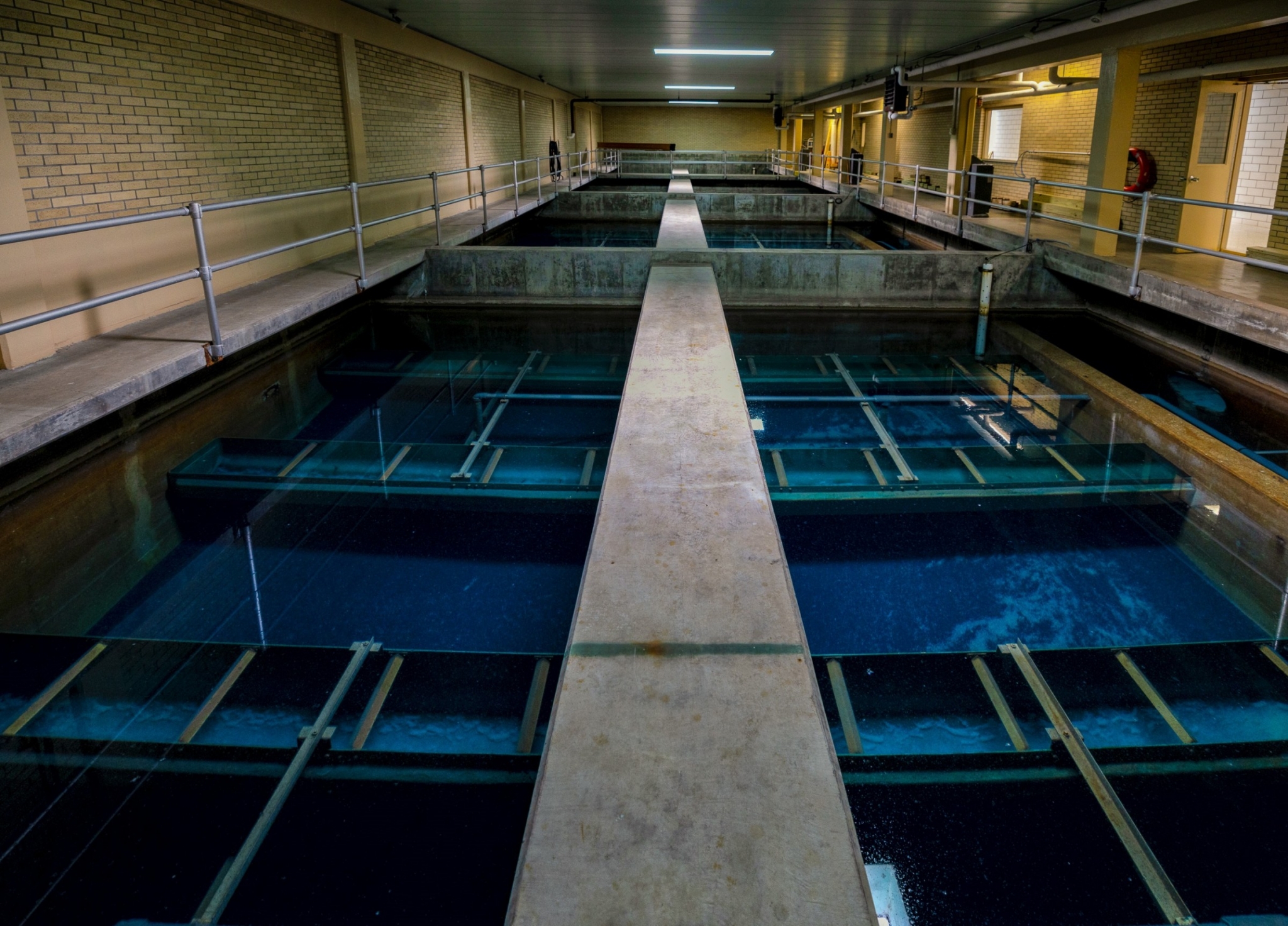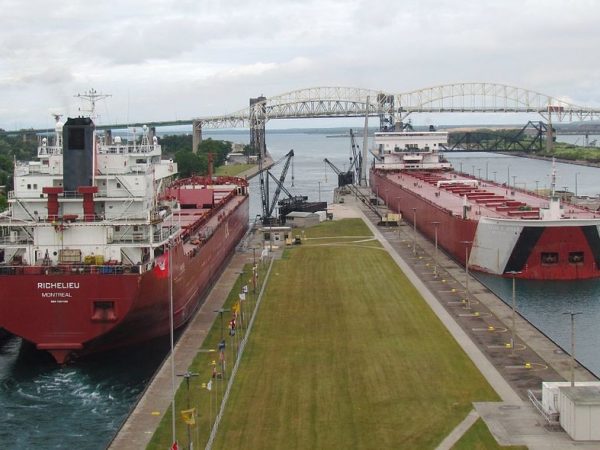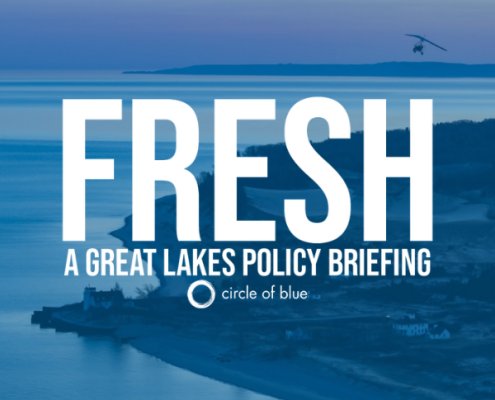
By Brett Walton, Circle of Blue
The Great Lakes News Collaborative includes Bridge Michigan; Circle of Blue; Great Lakes Now at Detroit Public Television; and Michigan Radio, Michigan’s NPR News Leader; who work together to bring audiences news and information about the impact of climate change, pollution, and aging infrastructure on the Great Lakes and drinking water. This independent journalism is supported by the Charles Stewart Mott Foundation. Find all the work HERE.
In? Or out?
Thousands of water utilities across the Great Lakes region and nationwide will decide in the next three months whether to join two multibillion-dollar, class-action settlements against the largest producers of toxic PFAS chemicals that have tainted drinking water supplies.
The settlements with 3M and DuPont, each having slightly different terms, could provide roughly 12,000 water providers with money to construct and operate facilities that remove the so-called “forever chemicals” from drinking water.
The settlements come as the U.S. Environmental Protection Agency is developing first-ever drinking water regulations for six PFAS chemicals. Those regulations will impose substantial financial burdens for utilities dealing with contamination. The settlements could provide money for construction, but also prevent future litigation against the companies.
“This is a complex set of issues with significant consequences,” Jeff Kray, managing partner with Marten Law, told Circle of Blue about the settlements.
The 3M settlement totals $12.5 billion while the DuPont settlement adds nearly $1.2 billion.
Those pots of money will be divided according to a two-factor formula: how much PFAS is in the water system and how much water does the utility treat? The source of the PFAS does not matter. More money is available for larger systems dealing with significant contamination. The two factors are intended as proxies for construction costs and operations/maintenance costs.
The settlements are “opt out,” which means that the 12,000 water providers that are part of the class are automatically bound by its terms, unless they opt out.
The deadlines for choosing not to participate are rapidly approaching. For the 3M settlement the opt-out deadline is December 11. For the DuPont settlement, it’s December 4.
For Kray, who represents water utilities in Washington and other states in PFAS lawsuits, the deadlines are an urgent matter. Utilities, he said, need to quickly assess their legal options and exposure to the chemicals. Otherwise they might miss out.
“You could have a situation where somebody is in the class, they never submit a claim form and get no money, but they are still bound by the settlement,” Kray said. “And that’s part of why it’s so important that these water providers pay attention, do so quickly, and get competent, professional advice, both on the technical and the legal side, to help them sort through this because it’s really challenging, and it’s going to affect them.”
Ann Arbor, Michigan, is one of those affected. The city installed a granular activated carbon treatment system in 2018-19 to remove PFAS. Replacing the carbon in the filters costs about $250,000 annually.
Brian Steglitz, Ann Arbor public services administrator, told Circle of Blue that the city is “carefully evaluating” whether to participate in the settlements.
“While a decision has not yet been made, we are evaluating the City’s past and estimated future costs to treat and remove PFAS from its drinking water sources along with the risks and costs of pursuing claims outside the class action against the estimated settlement the City might receive under the proposed settlement agreements,” Steglitz wrote in a statement.
The settlements, which could be granted final approval early next year, are certainly not a cure-all. Even though the dollars on the table are the largest single source of funds for PFAS drinking water treatment to date, they cannot fix every system in the country contending with contamination.
The North Carolina Department of Environmental Quality, for instance, estimates that 43 large municipal systems will not meet proposed federal regulations for PFOA and PFOS, two of the chemicals in the broad class of PFAS. The department estimates that the construction cost for treatment facilities would range from $661 million to $1.3 billion. And that does not include small systems.
A report from the engineering firm Black and Veatch estimated the national capital cost of meeting proposed EPA standards for PFOA and PFOS to be $47 billion. Operations and maintenance costs would add billions annually.
“All these settlements do is put a spotlight on a problem that we have already, which is how are we going to pay for dealing with PFAS in our water systems?” Kray said.
The multidistrict litigation is not the first settlement over PFAS in drinking water. In 2018, 3M signed an $850 million settlement with Minnesota for similar transgressions.
That settlement, now being implemented, has far fewer beneficiaries. Just 14 municipalities east of Minneapolis are eligible.
Cottage Grove, a city of 41,000 people along the Mississippi River, is one recipient. With the settlement funds, the city will prioritize construction of two treatment plants to remove PFAS from drinking water, in addition to connecting household wells to city water.
Initially it was assumed that Cottage Grove would need $60 million to $70 million for those facilities. With inflation, more money will be needed. The city just broke ground on the first treatment plant, a $38 million project that includes a new groundwater well. The second treatment plant is still in the design phase, said Ryan Burfeind, the city’s public works director.
The settlement is also supposed to fund 20 years of operating and maintaining the new facilities. But how far those funds will stretch depends on the construction cost for the treatment plants in the 14 communities.
Nonetheless, Burfeind is thankful for a funding source that does not put the burden on city residents.
“We’re very fortunate to have a funding source that we can utilize to build this,” Burfeind said. “I mean, there’s a lot of communities out there that don’t have that and are dealing with it today.”
Catch more news at Great Lakes Now:
Chicago Suburbs, Running Out of Water, Will Tap Lake Michigan
Minnesota Tribe Sets Enforceable Rules To Safeguard Wild Rice and Water Supply
Featured image: A national class-action settlement could provide funding to remove PFAS chemicals from drinking water. Photo © J. Carl Ganter/Circle of Blue




